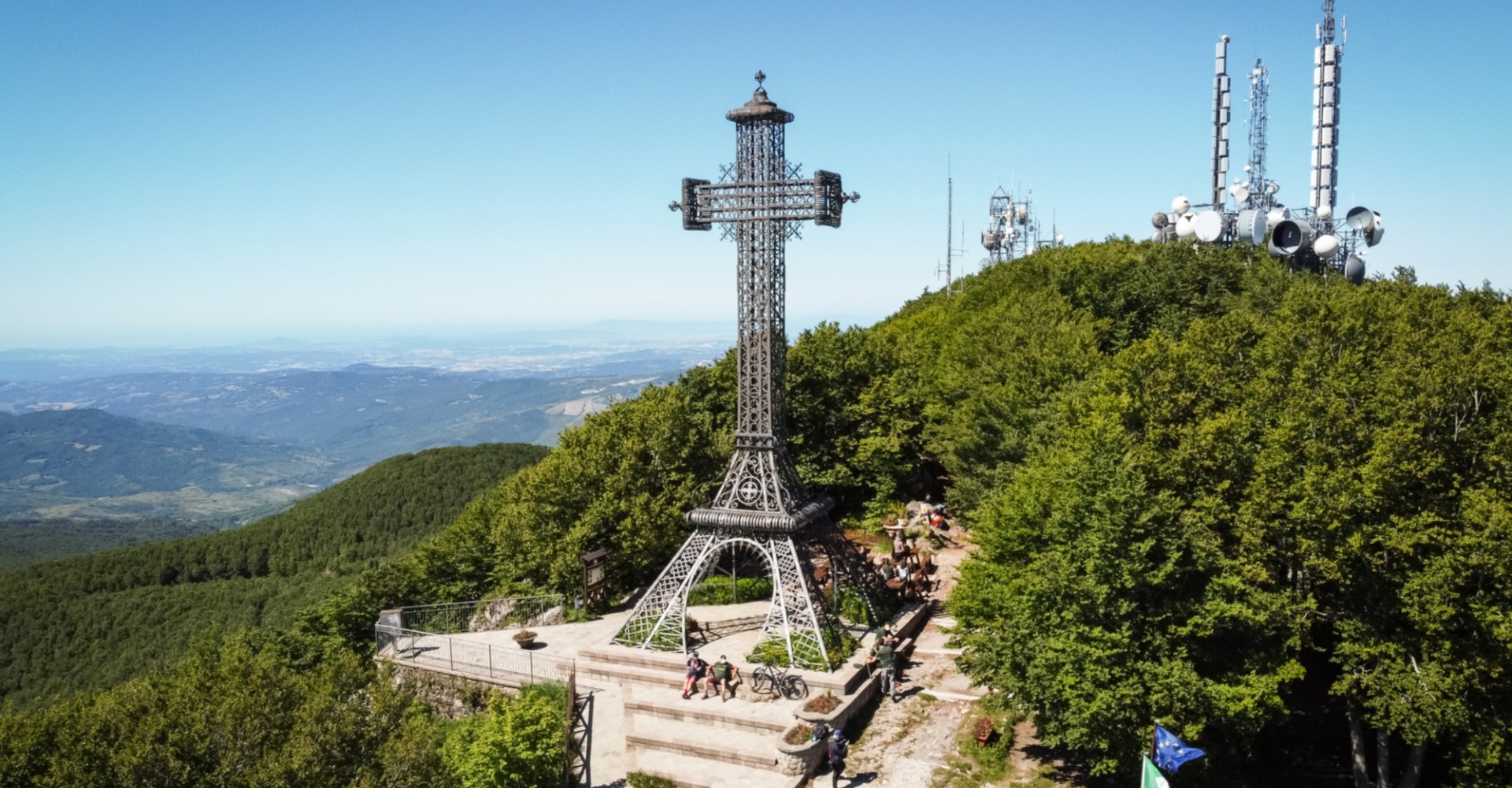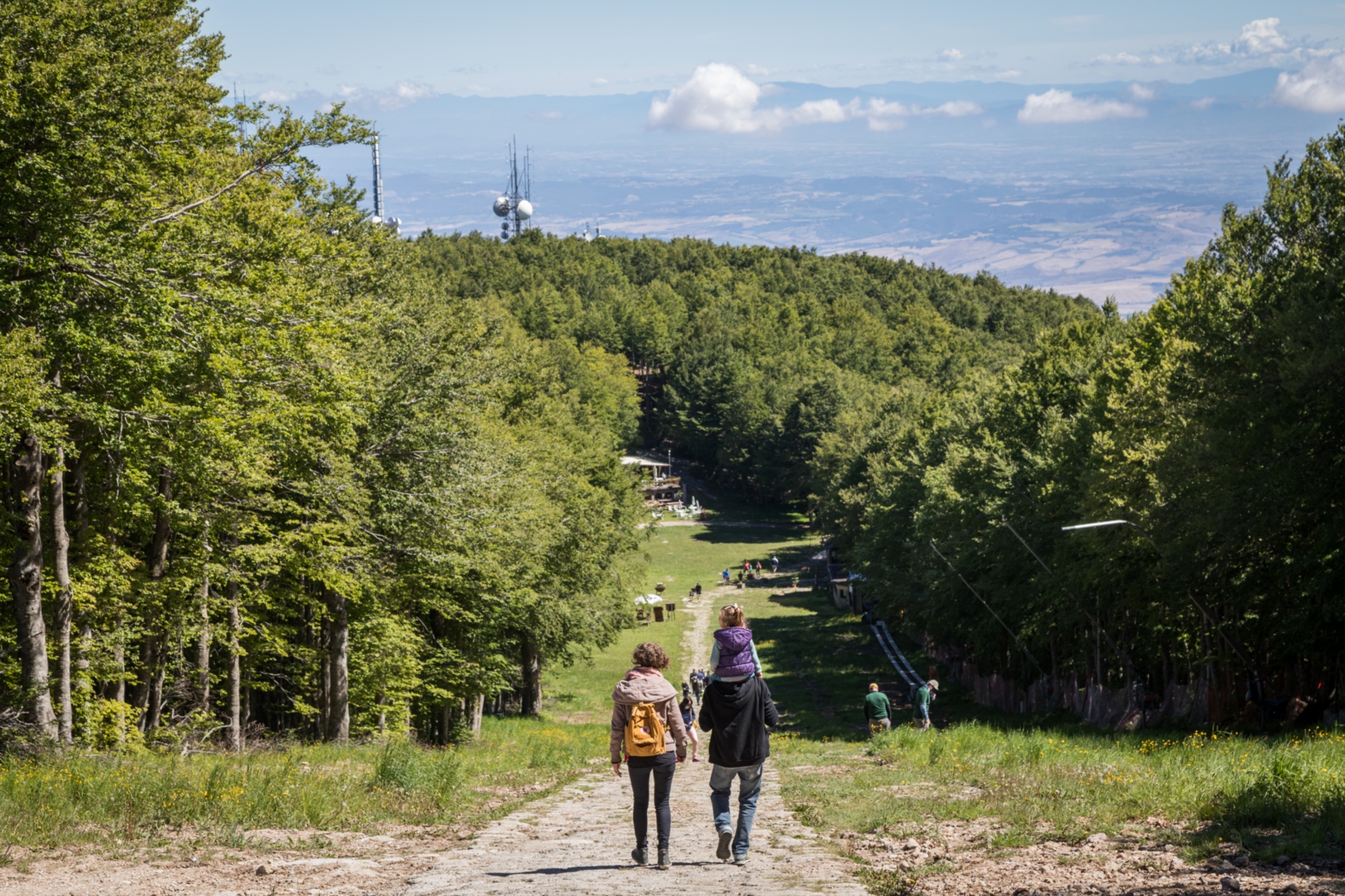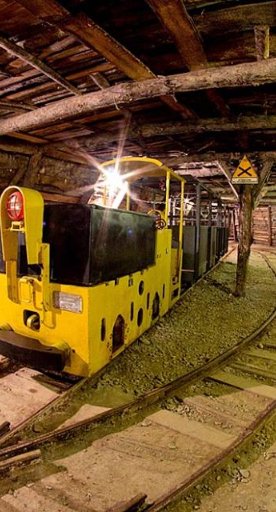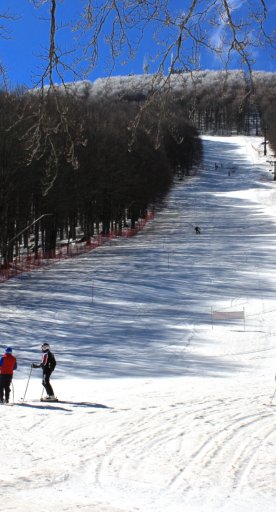
Cross on the summit of Mount Amiata
On the summit of the Amiata stands the monumental cross, a memory of time, reachable on foot, by car or chairlift
The ancient extinct volcano of Mount Amiata has always observed its valley and offers views of the green sea of lush forests and beyond the borders of Tuscany to those who choose to reach its summit at 1738 m of altitude.
On the top of the mountain stands the monumental cross, a wrought iron sculpture built to remember the passage of time: 22 m high and with an imposing appearance, the work was built at the behest of Pope Leo XIII at the end of the 19th century. To celebrate the Holy Year of 1900 and the arrival of the 20th century, twenty crosses were raised on the tops of as many mountains scattered throughout Italy, and for one of these Mount Amiata was chosen.

The sculpture was forged in the Sienese workshops and bringing it the top of the Tuscan volcano was a gigantic undertaking, made possible by the determination and will of the community of Abbadia San Salvatore. What you can admire, from the top as from the surrounding areas, is not the work made in 1900: the cross suffered under the bombings of World War II, but it was rebuilt and today it takes pride of place, cared for and protected by the people of Amiata.
How to reach the Cross on the summit of Amiata

To reach the highest point of the mountain and the cross you can follow the paths that pass through nature, varying in difficulty and height difference.
The panorama that opens up around the summit is a few hundred meters from the last refuge, where you can comfortably arrive by car and park. It's a walk that's suitable for the whole family and will lead you to your destination in just a few minutes. After the cross, it's only a few steps to the Madonna of Scouts, placed above the rocks of trachytic origin and where the summit signal of the Military Geographical Institute dated 1935 is located. The panorama here is also excellent and extends over the entire Southern Tuscany and the Val d'Orcia.
Trekking lovers can instead opt for the Capomacchia path, which measures about 2 km and is a bit more challenging in the final stretch; the last kilometer that separates it from the summit is the La Scalettaia path, a natural continuation of the Capomacchia and of medium-high difficulty.
The ring that starts from Prato delle Macinaie climbs up to the top and presents a moderate difference in height, for a total distance of 7 km immersed in the dense forests of beech and chestnut trees that change their appearance in every season. The best period is autumn, where the show of fall foliage colors the light with orange hues.

Alternatively, a comfortable chairlift allows you to reach the summit in a few minutes, enjoying the Amiata landscape from above; this can be taken in the two localities of Cantore and Macinaie.
The remarkable solid cross on the summit is one of the spiritual places found on Mount Amiata, where, among its woods, are hidden abbeys, towers and even a Tibetan center, all to be discovered by staying in the shelters or in the characteristic mountain villages.


